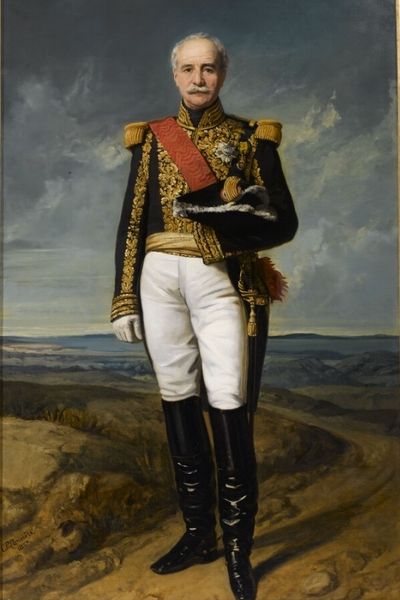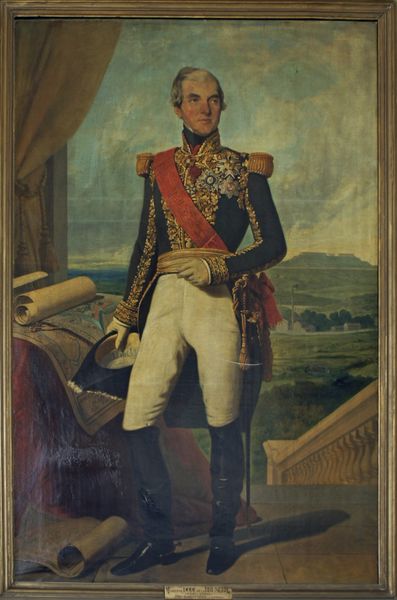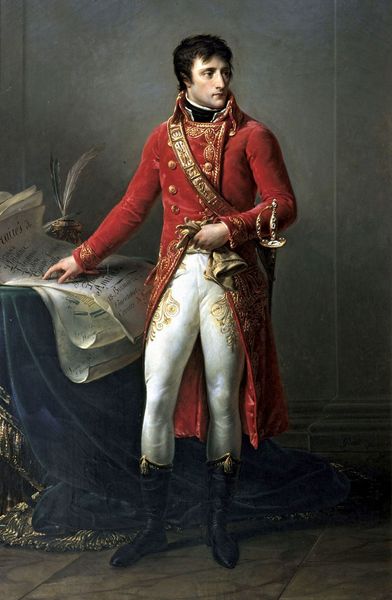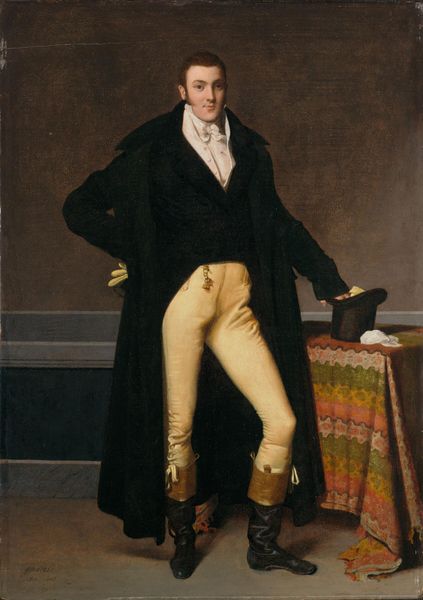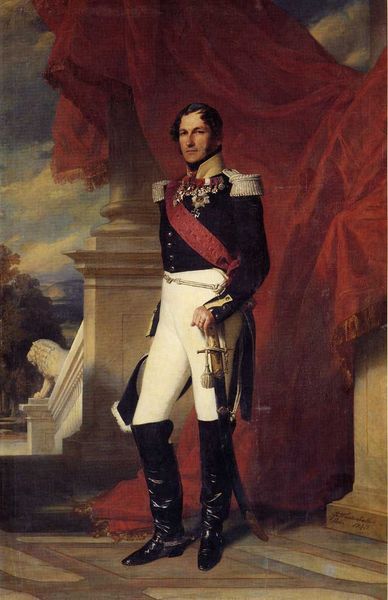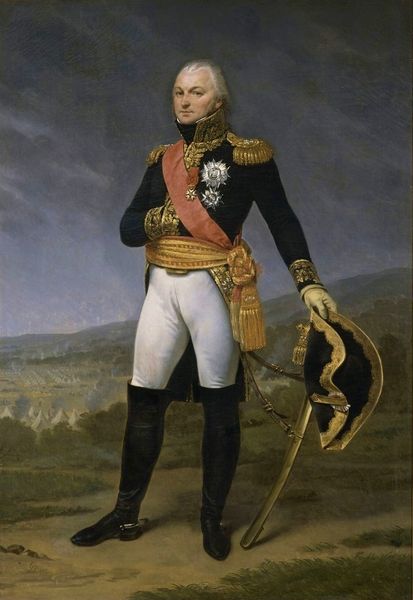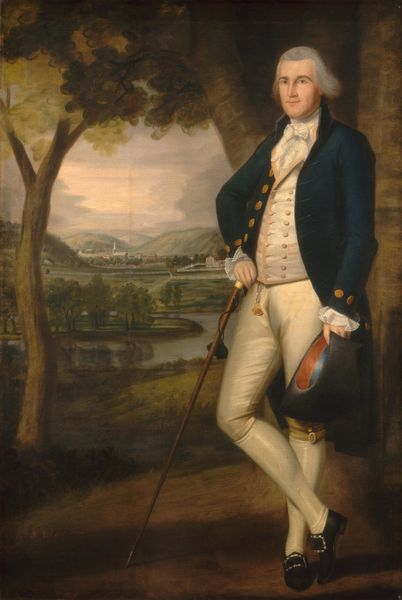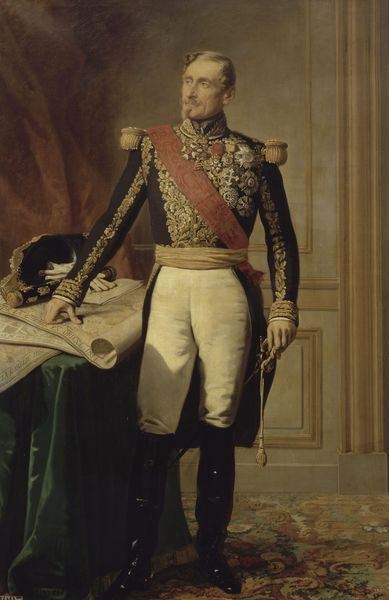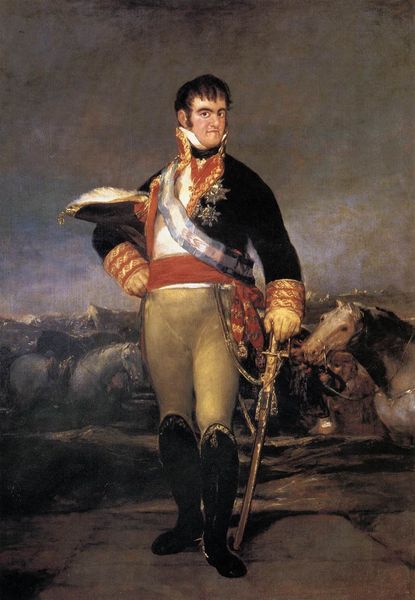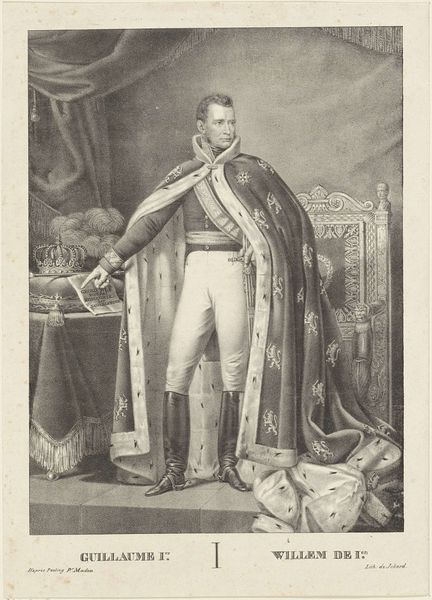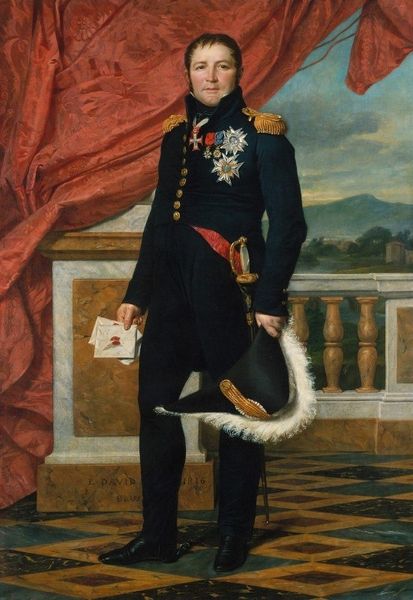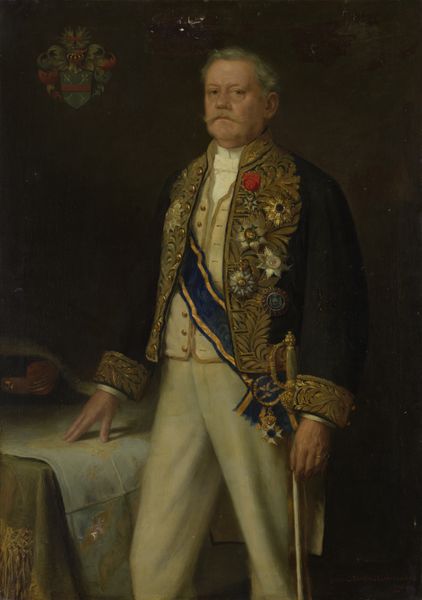
painting, oil-paint
#
portrait
#
figurative
#
painting
#
oil-paint
#
history-painting
#
academic-art
#
realism
Copyright: Public Domain: Artvee
Thomas Sully made this portrait of Captain Charles Stewart using oil paint on canvas. As a painter, Sully needed to understand the properties of his materials, how the oil would affect the pigment over time, the preparation of the canvas, and the techniques of layering paint to achieve the desired effects of light and shadow. But look closer. The captain's uniform would have been assembled from textiles sourced globally through trade, from cotton grown in the Americas to wool woven in Europe. The gold embellishments point to specialized labor and skilled handwork. The sword at his side, made of steel, is an example of early industrial production, while the maps on the table represent not just navigation but also territorial ambition and global resource extraction. Considered in this way, the painting is much more than just a likeness. It's a window onto the complex economic systems of the early 19th century. By examining the materials and processes that went into its creation, we gain a deeper understanding of the intertwined histories of art, labor, and empire.
Comments
No comments
Be the first to comment and join the conversation on the ultimate creative platform.
